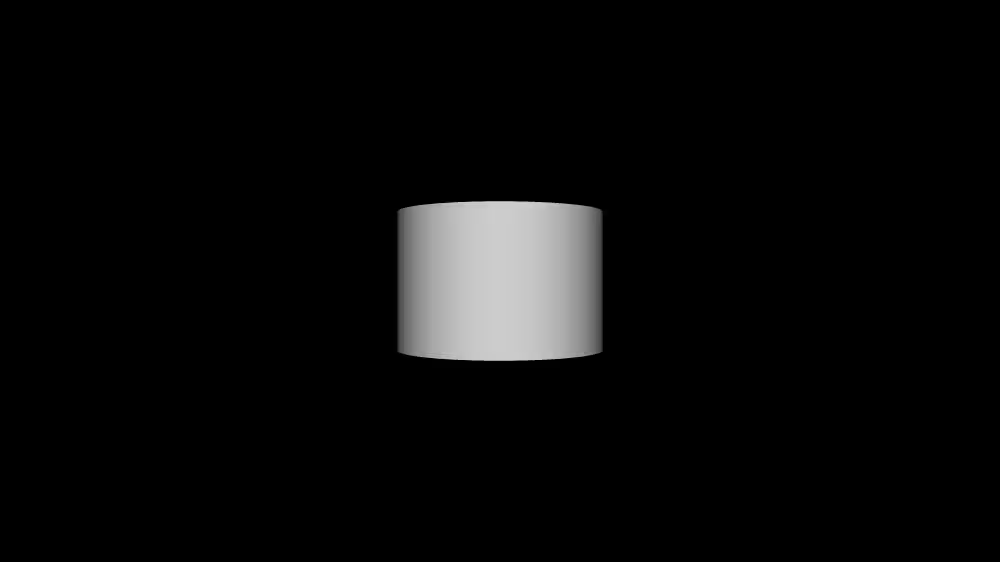Building an X3D World
Building an X3D World
X3D file structure
X3D files contain:
- The file header
- Comments - notes to yourself
- Nodes - nuggets of scene information
- Fields - node attributes you can change
- Values - attribute values
- Routes - connections between fields
- more …
A sample X3D file
XML Encoding
1
2
3
4
5
6
7
8
9
10
11
12
13
14
15
<?xml version="1.0" encoding="UTF-8"?>
<!DOCTYPE X3D PUBLIC "ISO//Web3D//DTD X3D 4.0/EN" "https://www.web3d.org/specifications/x3d-4.0.dtd">
<X3D profile='Interchange' version='4.0' xmlns:xsd='http://www.w3.org/2001/XMLSchema-instance' xsd:noNamespaceSchemaLocation='https://www.web3d.org/specifications/x3d-4.0.xsd'>
<Scene>
<!-- A Cylinder -->
<Shape>
<Appearance>
<Material/>
<Appearance>
<Cylinder
height='2.0'
radius='1.5'/>
</Shape>
</Scene>
</X3D>
Classic VRML Encoding
1
2
3
4
5
6
7
8
9
10
11
12
13
14
#X3D V4.0 utf8
PROFILE Interchange
# A Cylinder
Shape {
appearance Appearance {
material Material { }
}
geometry Cylinder {
height 2.0
radius 1.5
}
}
Example

Understanding the header
#X3D V4.0 utf8
- #X3D: File contains X3D text
- V4.0 : Text conforms to version 4.0 syntax
- utf8 : Text uses UTF8 character set
Understanding UTF8
- utf8 is an international character set standard
- utf8 stands for:
- UCS (Universal Character Set) Transformation Format, 8-bit
- Can encodes up to 2,164,864 characters for many languages
- ASCII is a subset
Understanding profiles and components
- PROFILE Interchange: File uses nodes from the
Interchangeprofile - Nodes are grouped into components
- Components are grouped into profiles
- Browsers can load components on demand to reduce initial load times and improve performance by only fetching what is necessary when it’s needed
- Additionally add as many COMPONENT statements you need
XML Encoding
1
2
3
4
5
6
7
8
9
10
11
<?xml version="1.0" encoding="UTF-8"?>
<!DOCTYPE X3D PUBLIC "ISO//Web3D//DTD X3D 4.0/EN" "https://www.web3d.org/specifications/x3d-4.0.dtd">
<X3D profile='Interchange' version='4.0' xmlns:xsd='http://www.w3.org/2001/XMLSchema-instance' xsd:noNamespaceSchemaLocation='https://www.web3d.org/specifications/x3d-4.0.xsd'>
<head>
<component name='CubeMapTexturing' level='3'/>
<component name='Scripting' level='1'/>
</head>
<Scene>
...
</Scene>
</X3D>
Classic VRML Encoding
1
2
3
4
PROFILE Interchange
COMPONENT CubeMapTexturing : 3
COMPONENT Scripting : 1
What profiles and components are there:
Header statements
There are a few other header statements, but always add a PROFILE statement. If there is no profile declared, profile Full is assumed and all components will be loaded, but this is probably not always desired.
There are three header statements:
- COMPONENT statements
- UNIT statements
- META statements
Order of header statements is important!
XML Encoding
1
2
3
4
5
6
7
8
9
10
11
12
13
14
15
16
<?xml version="1.0" encoding="UTF-8"?>
<!DOCTYPE X3D PUBLIC "ISO//Web3D//DTD X3D 4.0//EN" "https://www.web3d.org/specifications/x3d-4.0.dtd">
<X3D profile='Interchange' version='4.0' xmlns:xsd='http://www.w3.org/2001/XMLSchema-instance' xsd:noNamespaceSchemaLocation='https://www.web3d.org/specifications/x3d-4.0.xsd'>
<head>
<component name='CubeMapTexturing' level='3'/>
<component name='Scripting' level='1'/>
<unit category='angle' name='degree' conversionFactor='0.017453292519943295'/>
<unit category='length' name='millimetre' conversionFactor='0.001'/>
<meta name='created' content='Thu, 08 May 2025 14:11:46 GMT'/>
<meta name='modified' content='Thu, 08 May 2025 14:19:44 GMT'/>
</head>
<Scene>
<!-- zero or more proto, node, route, import, export statements in arbitrary order -->
...
</Scene>
</X3D>
Classic VRML Encoding
1
2
3
4
5
6
7
8
9
10
11
12
13
14
15
16
17
18
19
20
#X3D V4.0 utf8
# exactly one profile statement
PROFILE Interchange
# zero or more component statements
COMPONENT Scripting : 1
COMPONENT CubeMapTexturing : 3
# zero or more unit statements
UNIT angle degree 0.017453292519943295
UNIT length millimetre 0.001
# zero or more meta statements
META "created" "Thu, 08 May 2025 14:11:46 GMT"
META "modified" "Thu, 08 May 2025 14:12:13 GMT"
# zero or more proto, node, route, import, export statements
# in arbitrary order
...
Using comments
XML Encoding
1
<!-- A comment -->
- Comments start with
<!--and must end with-->.
Classic VRML Encoding
1
2
3
4
5
# A comment
#/* A
* multi-line
* comment */#
- Comments start with a number-sign
#and extend to the end of the line. - Mult-line comments start with
#/*and must end with*/#.
Using nodes
XML Encoding
1
<Cylinder/>
Classic VRML Encoding
1
2
Cylinder {
}
- Nodes describe shapes, lights, sounds, etc.
- Every node has:
Using node type names
Node type names are case sensitive:
- Each word starts with an upper-case character
- The rest of the word is lower-case
Some examples:
Appearance, Cylinder, Material, Shape
Using fields and values
XML Encoding
1
2
3
<Cylinder
height='2.0'
radius='1.5'/>
Classic VRML Encoding
1
2
3
4
Cylinder {
height 2.0
radius 1.5
}
- Fields describe node attributes
Every field has:
- A field name (height, radius, etc.)
- A data type (float, integer, etc.)
- A default value
- Different node types have different fields
- Fields are optional
- A default value is used if a field is not given
- Fields can be listed in any order
- The order doesn’t affect the node
Placing nodes
Every node has a »containerField« attribute with a default value, which is different for each node type. You can change the value if needed.
1
2
3
4
5
6
7
8
<Collision>
<Shape containerField='proxy'>
<Box/>
</Shape>
<Transform>
<!-- ... -->
</Transform>
</Collision>
Summary
- The file header gives the version and encoding
- Nodes describe scene content
- Fields and values specify node attributes
- containerField attribute can be changed.
- Everything is case sensitive
This post is licensed under CC BY 4.0 by the author.